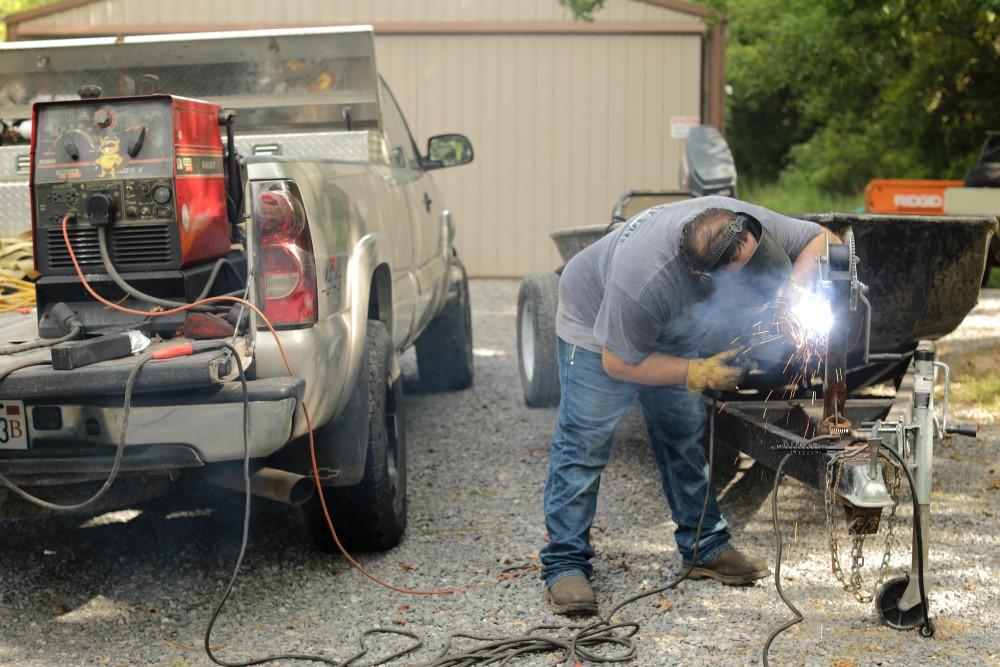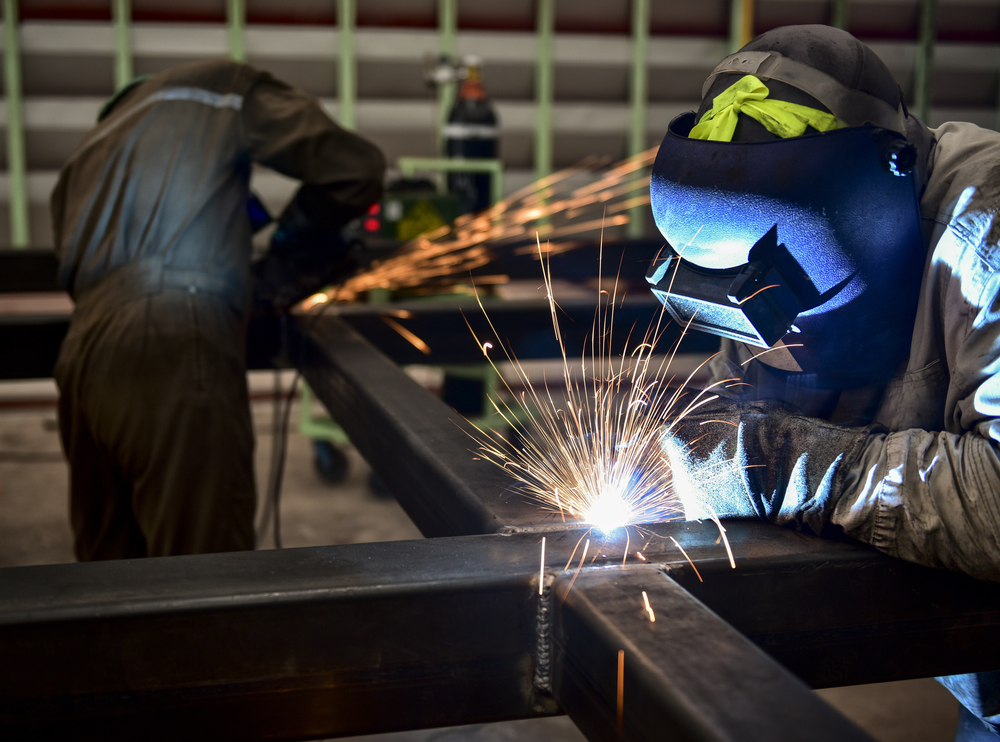Field-tested steps to prevent porosity in welds with Belgrade Welding
Usual Welding Repair Issues and How to Address Them Successfully
Welding repair work frequently encounter a variety of issues that can threaten the stability of the end product. Typical troubles consist of inadequate infiltration, porosity, and imbalance, amongst others. Each defect offers special obstacles that require particular strategies for resolution. Recognizing these issues is important for welders aiming to boost their results and abilities. This discussion will discover these typical welding repair problems and effective approaches to resolve them.
Inadequate Penetration
Inadequate penetration occurs when the weld steel falls short to completely fuse with the base material, causing weak joints and potential structural failures. This concern frequently originates from insufficient warmth input, wrong electrode angle, or inappropriate welding speed. Welders may run into poor penetration as a result of a miscalculation of the necessary criteria for a certain material thickness or type. Additionally, contamination on the base material's surface can hinder effective bonding, aggravating the problem. To address insufficient penetration, welders ought to guarantee proper settings on their equipment and preserve a clean work surface. Routine inspection of welds is suggested to recognize any deficiencies early, allowing for prompt adjustments and the avoidance of endangered structural honesty in bonded settings up.
Porosity
Porosity is a common flaw in bonded joints that shows up as small gas bubbles caught within the weld metal. This problem can jeopardize the honesty of the weld, leading to reduced toughness and potential failing under stress and anxiety. Montana Mobile Welding and Repair Belgrade Welding. Porosity usually arises from contamination, wetness, or incorrect welding techniques, which permit gases to get away into the molten weld pool. To resolve porosity, welders need to guarantee appropriate surface area prep work, keep a tidy workplace, and utilize ideal welding parameters. Furthermore, picking the right filler material and protecting gas can minimize gas entrapment. Normal evaluation and testing of welds can aid recognize porosity early, ensuring timely corrective actions are taken, consequently preserving the high quality and reliability of the welded structure
Misalignment
Imbalance in welding can occur from various elements, consisting of improper arrangement and thermal growth. Comprehending the origin is vital for effective resolution. Numerous adjustment techniques are readily available to realign elements and ensure architectural honesty.
Reasons for Imbalance
Welding misalignment commonly comes from a selection of underlying problems that can jeopardize structural honesty. One primary reason is inappropriate fit-up of components before welding, which can lead to voids and unequal surface areas. Variations in thermal development during the welding process can also result in distortion, particularly if the products being joined have different coefficients of growth. Additionally, insufficient clamping and fixturing might fail to hold elements firmly in position, causing motion throughout welding. Inadequately kept tools, including welding machines and tools, may present incongruities in the weld bead, further adding to imbalance. Operator error, stemming from not enough training or experience, can additionally play a substantial function in developing misaligned welds.

Adjustment Methods Readily Available
Attending to misalignment properly calls for a mix of corrective methods tailored to the details concerns at hand. One usual method is making use of fixtures or jigs to hold elements in the right placement throughout welding, guaranteeing consistent alignment. Furthermore, preheating the materials can help in reducing distortion and boost fit-up. For considerable misalignment, mechanical realignment techniques, such as utilizing hydraulic jacks or clamps, can be used to fix the setting prior to welding. Post-weld warmth treatment might additionally be required to ease tensions created by imbalance. Careful assessment and modification throughout the configuration phase can protect against imbalance concerns from ending up being considerable troubles, advertising a smoother welding procedure and improving overall structural integrity.
Distortion
Distortion is a typical challenge in welding that can arise from numerous elements, consisting of irregular home heating and cooling. Comprehending the causes of distortion is necessary for applying efficient prevention methods. Resolving this problem not just improves structural stability but additionally improves the general top quality of the weld.
Causes of Distortion
When based on the extreme warmth of welding, materials usually go through adjustments that can result in distortion. This sensation mainly occurs from thermal growth and contraction during the welding procedure. As the weld area warms up, the product expands; upon air conditioning, it gets, which can produce inner stress and anxieties. Additionally, unequal heating across a work surface can exacerbate these tensions, leading to warping or bending. The kind of product additionally plays a significant function; steels with differing thermal conductivity and coefficients of expansion might react in a different way, causing uncertain distortions. Poor joint design and insufficient fixturing can contribute to misalignment throughout welding, enhancing the probability of distortion. Understanding these causes is essential for effective welding repair work and avoidance strategies.
Prevention Techniques
Efficient avoidance techniques for distortion during welding emphasis on controlling heat input and guaranteeing proper joint style. Keeping a constant warm input assists to reduce thermal growth and contraction, which can result in distortion. Using strategies such as pre-heating the work surface can also reduce the temperature slope, promoting uniform home heating. In addition, picking ideal joint layouts, such as T-joints or lap joints, can improve stability and reduce tension concentrations. Applying proper fixturing to secure the workpieces in position further aids in keeping placement throughout the welding process. Ultimately, staggered welding series can disperse warm extra evenly, avoiding local distortion. By using these strategies, welders can significantly lower the probability of distortion and boost the general top quality of their welds.
Fracturing
Fracturing is an usual problem encountered in welding repair work, often arising from numerous elements such as inappropriate cooling prices, material option, or poor joint preparation. The occurrence of splits can considerably jeopardize the honesty of the weld, causing potential failings throughout procedure. To resolve this issue, welders must first assess the origin, guaranteeing that products work and suitably chosen for the details application. In addition, controlling the cooling rate during the welding process is necessary; fast cooling can generate stress and lead to breaking. Proper joint style and preparation additionally add to minimizing the risk. Carrying out these approaches can boost weld high quality and durability, ultimately minimizing the chance of splitting in completed weldments.

Incomplete Combination
A substantial issue in welding repair services is incomplete combination, which happens when the weld steel does not adequately bond with the base material or previous weld passes - Fabrication. This problem can cause weaknesses in the joint, possibly endangering the integrity of the welded structure. Aspects adding to incomplete combination consist of insufficient warmth input, inappropriate welding technique, and contamination of the surfaces being joined. To resolve this issue effectively, welders should guarantee appropriate pre-weld cleansing and surface area prep work, in addition to change their welding specifications to accomplish sufficient infiltration and blend. Normal evaluation throughout the welding procedure can likewise help determine insufficient combination early, enabling prompt corrective actions to improve the total quality of the weld
Overheating
While welding repair services can boost architectural honesty, overheating provides a considerable challenge that can cause product degradation. Extreme warmth during welding can modify the mechanical homes of steels, leading to reduced toughness, increased brittleness, and warping. This sensation is specifically important in high-stress applications where structural reliability is critical. Determining overheating can involve aesthetic examinations for staining or distortion, as well as monitoring temperature throughout the welding process. To reduce the risks associated with getting too hot, welders must employ ideal methods, such as regulating heat input, adjusting travel rate, and making use of appropriate filler materials. Furthermore, applying pre- and post-weld warm treatments can help recover material homes and boost the general high quality of the repair service, making sure long-term efficiency and safety and security.
Frequently Asked Questions
What Are the Typical Indicators of a Welding Flaw?

How Can I Check My Welds for High quality?
To test welds for high quality, one can utilize aesthetic evaluations, ultrasonic screening, and radiographic methods. Each method guarantees architectural honesty, identifies flaws, and confirms adherence to specified standards, ultimately enhancing the dependability of the welded joints.
What Security Precautions Should I Take While Welding?
When welding, one must prioritize safety and security by wearing appropriate personal protective equipment, making sure appropriate ventilation, safeguarding flammable products away, preserving a tidy work area, and being aware of surroundings to avoid injuries and mishaps.
Can I Fix a Weld Without Renovating the Entire Joint?
Fixing a weld without renovating the entire joint is feasible, relying on the damages (Montana Mobile Welding and Repair Fabrication). Methods such as grinding, including filler product, or making use of a welding procedure can efficiently address certain imperfections while maintaining the surrounding structure
What Equipment Are Vital for Effective Welding Repairs?
Crucial tools for reliable welding repair work consist of a welding machine, cord brush, grinder, protective gear, clamps, and filler materials. Each tool plays an essential duty in ensuring quality and security during the repair procedure. Porosity normally develops from contamination, wetness, or inappropriate welding methods, which enable gases to escape right into the molten weld pool. Inadequately conserved tools, consisting of welding makers and devices, might present variances in the weld bead, more contributing to imbalance. When subjected to the extreme warm of welding, products commonly undergo adjustments that can lead to distortion. Breaking is an usual concern encountered in welding fixings, commonly resulting from different factors such as improper air conditioning prices, product choice, or poor joint prep work. A substantial problem in welding repairs is incomplete fusion, check here which takes place when the weld steel does not adequately bond with the base material or previous weld passes.